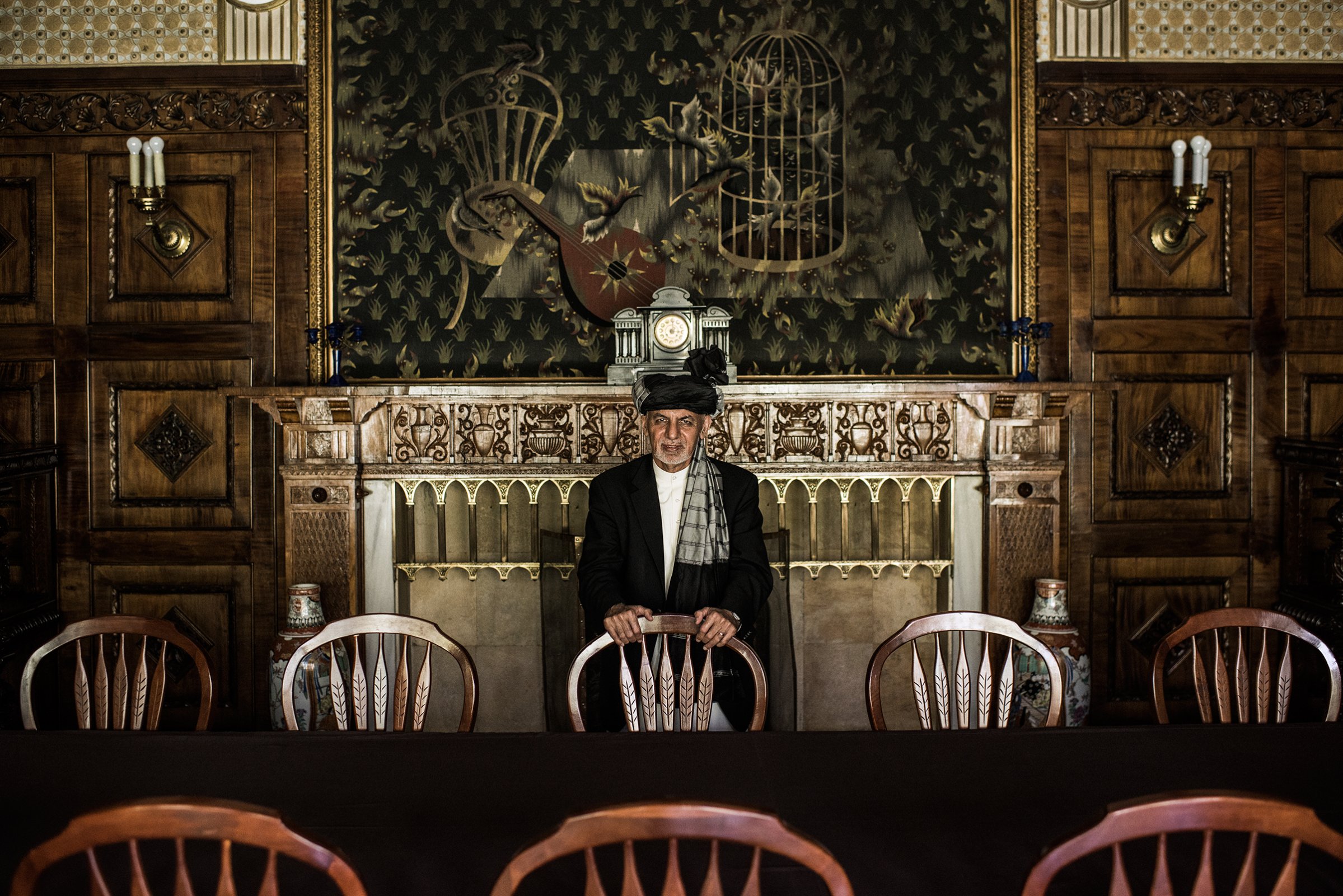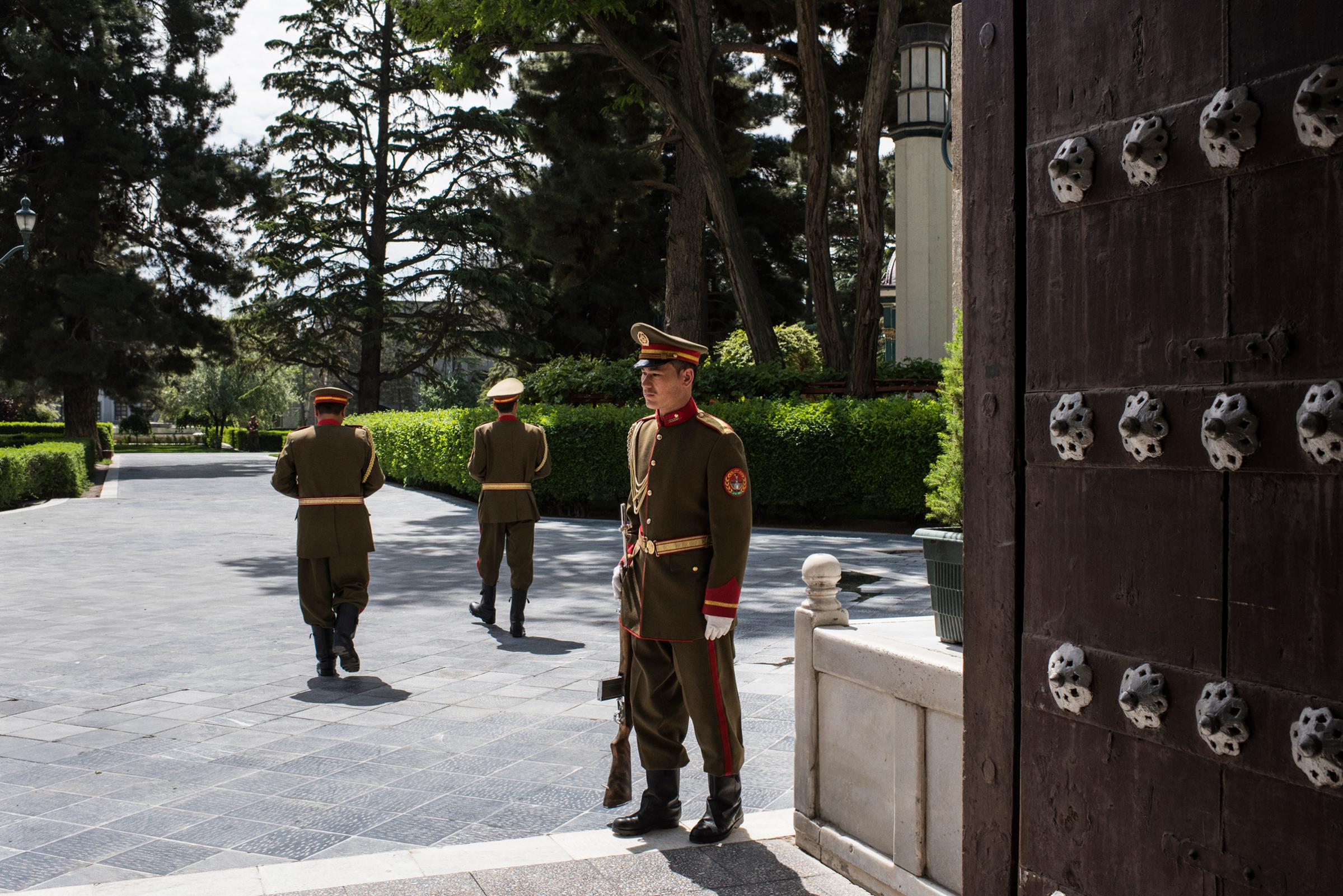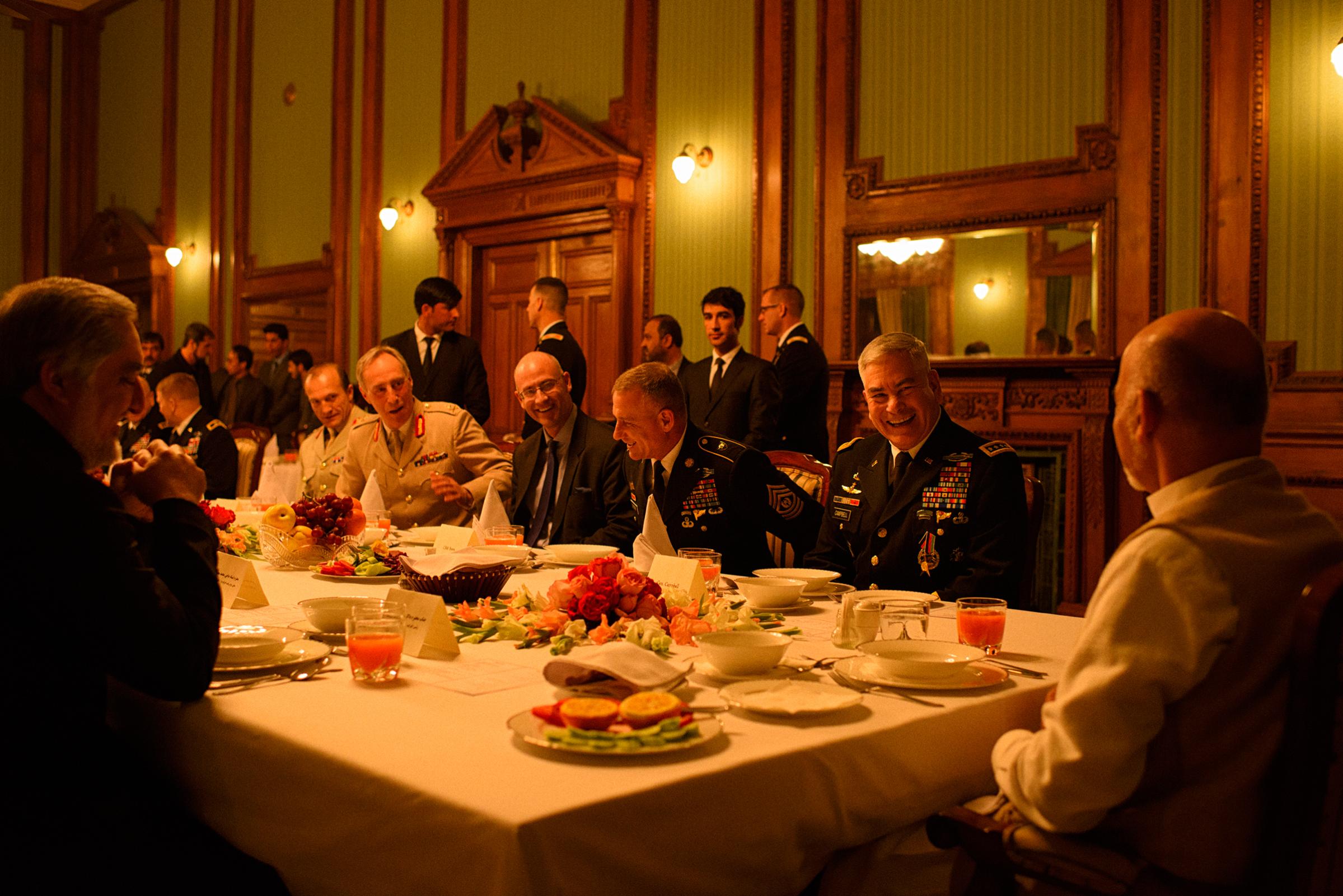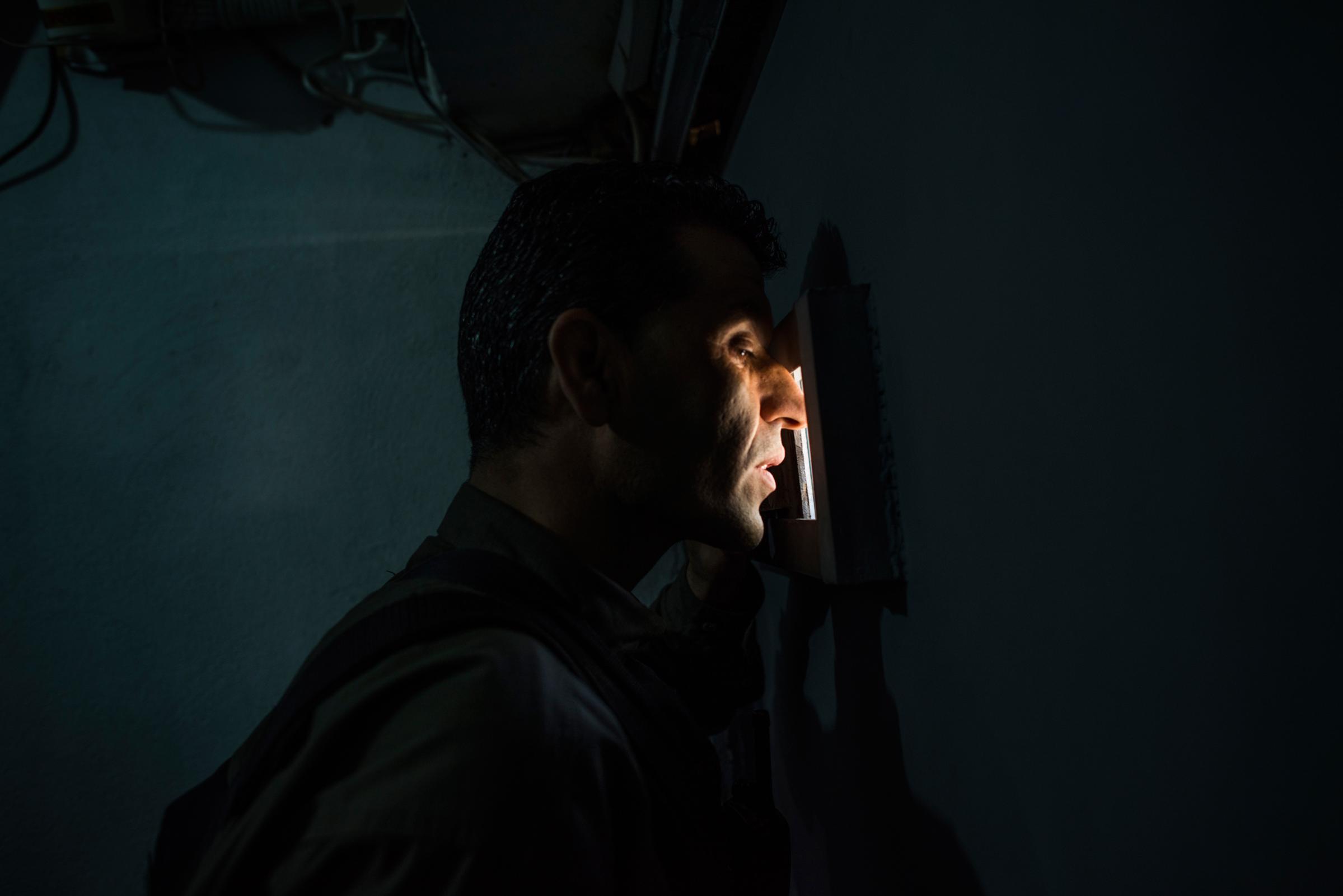
On the morning of May 31, a giant plume of smoke spread across the sky above the Arg, the 19th century Kabul fortress that houses the Afghan President’s office and residence.
On the ground, just down the road from its gates and around the corner from the German Embassy, a busy thoroughfare was transformed into a gaping debris-filled crater some 13 ft. deep. The remains of the morning rush hour were everywhere: shattered windscreens, twisted metal, flattened tires. Once again, Kabul was bleeding.
The smoke came from a powerful bomb that killed at least 90 people and wounded more than 400 in what was one of the worst terrorist atrocities to shake Afghanistan. A decade and a half after a U.S.-led invasion aimed at dislodging terrorists, the Kabul bombing was a jolting reminder of the worsening war there, the longest America has ever been involved in. As victims were rushed to the surrounding hospitals, it underlined, in the bloodiest possible terms, what the country’s President Ashraf Ghani told TIME just weeks earlier: “This is the front line.”

And it is an increasingly dangerous one. Last year, nearly 3,500 Afghan civilians died in the conflict, a record number that included close to 1,000 children, as Taliban insurgents and terrorists from ISIS and other groups gained ground. As of February, the Afghan government’s control or influence extended only to about 60% of Afghanistan’s 407 districts. All told, some 3 million Afghans–almost 10% of the population–now live in areas under insurgent control or influence. And of the 98 U.S.-designated terrorist organizations worldwide, 20 operate in the borderlands between Afghanistan and Pakistan. “Civilian casualties have risen steadily since 2009,” says Aaron B. O’Connell, a historian and former director of defense policy and strategy at the National Security Council under President Barack Obama, “and fighting has been almost constant.”
Ghani met TIME at the Arg on May 11, where he works from a desk that was made for King Amanullah Khan, the country’s ruler for a decade until 1929. Khan introduced Afghanistan’s first constitution and first national budget. He abolished slavery and promoted women’s rights. Ultimately, Khan failed to change Afghanistan for good–a conservative tribal revolt forced him to step down.
When Ghani became Afghanistan’s leader in 2014, he had Khan’s desk brought out of storage, repaired and put in his office. “I sit at the desk of a modernizer who could not complete [his reforms],” Ghani says. For him, the desk is a reminder that “continuity and change need to be managed. It’s about finding the right balance.”
The Kabul bombing shows just how hard that is, for the desk is also a reminder of the gap between the hope of a stable Afghanistan and the reality of a constantly worsening security situation. The only thing bridging that gap these days is the presence of 8,400 American troops (along with some 4,600 NATO soldiers) and the possibility of more to come. The international troops are there to train Afghan forces and fight terrorists from al-Qaeda, ISIS and other groups. But as security deteriorates, the question is: why should the U.S. send more soldiers to a war that only seems to be going from bad to worse?

For Ghani, it comes down to the terror threat, something he discussed when he made the case for a continuing U.S. presence in Afghanistan in two phone calls with President Donald Trump. (The two leaders also met briefly during Trump’s recent trip to Saudi Arabia.) “We were able to talk to each other very easily,” Ghani says. “But the style is different so you don’t prepare half-hour briefings [for Trump]. You need to be very sharp. It’s a business model. Can you do the elevator pitch?”
With the Trump Administration now weighing proposals to send an additional 3,000 to 5,000 American troops to Afghanistan, Ghani’s pitch may have worked. Such a boost would mark a reversal of policy from the Obama years, when the emphasis was on leaving Afghanistan. It would come as Washington steps up its fight against ISIS in Afghanistan in addition to Iraq and Syria. On April 13, the U.S. dropped a 21,000-lb. bomb–dubbed the “mother of all bombs”–on an ISIS cave complex in eastern Afghanistan. The bomb “destroyed a very significant group of ISIS leaders,” says Ghani, adding that the terrorist group still has hundreds of lethal fighters in the country. “We are not just dying to defend our own freedom,” he says.
More than 2,200 U.S. troops have been killed in Afghanistan since 2001, and some 20,000 have been wounded. And yet the Taliban are resurgent, ISIS is taking root, and Ghani says that al-Qaeda–the reason the U.S. invaded Afghanistan in 2001 in the first place–is “not finished by any means.” The U.S., Ghani says, can’t afford to walk away. “I would like the American taxpayer to imagine, given what Osama [bin Laden] alone could do … what if a third, a half–God forbid, or all–of Afghanistan is a center of global terrorism incorporated?” he says. “[Americans] are not safe, but if this menace is not contained, none of us is going to be safe.”
In addition to the foreign soldiers in the country, Afghanistan now has more than 300,000 of its own troops in the field fighting the Taliban and other groups. It is telling that most of the Afghan watchers imagine a strategy that leads not to the defeat of the Taliban but to some form of negotiations. Experts say that simply sending more U.S. troops won’t make Afghanistan safe. “A political solution has to be the goal,” says Andrew Wilder of the U.S. Institute of Peace. But will the insurgents come to the negotiating table?

“There are advantages to sending more troops,” says Michael Kugelman of the Wilson Center. “You can enhance important training and advising programs for Afghan troops and provide a measure of reassurance to an Afghan military with low morale, which worries that U.S. forces will abandon the country.” But the best Washington can hope for, he adds, is that “you can keep things from falling apart completely and give the Afghans more space and time to come up with a reconciliation plan [with the Taliban].”
Ghani, who just turned 68, is an unlikely politician–and an even more unlikely wartime leader. Born into a prominent Afghan family, he first left the country in his teens, traveling to Oregon as an exchange student, and then to college in Beirut. In the 1970s, he taught at Kabul University before leaving for the U.S. for almost a quarter-century as Afghanistan was consumed by war. At the end of that decade, a communist coup was followed by a Soviet occupation that lasted until 1989.
Like millions of their fellow Afghans, Ghani and his family were forced to remain in exile. He taught at the University of California, Berkeley, and Johns Hopkins University before an 11-year stint at the World Bank. In the years after the fall of the Taliban, he co-wrote a book on failed states. His approach is consistently cerebral: when Ghani talked with TIME about war and terrorism, his references ranged from Max Weber and V.S. Naipaul to Lenin’s theories, South Korea’s economic miracle and the writings of Gabriel García Márquez. Politics, he admits, has been an adjustment. “What I’ve learned is that doing the right thing is not enough,” he says. “You have to communicate and convince your stakeholders.”
As Finance Minister until 2004, Ghani was known as an impatient technocrat with a short temper and little time for the dealmaking and compromises of politics. “I had a reputation for being extremely intolerant, and I was,” he says. To his critics, Ghani’s attitude showed that he was out of touch–more American college professor than Afghan politician who could effectively navigate the country’s complex patchwork of ethnic and tribal allegiances. “He was away from the country for a long time,” says Rahmatullah Nabil, a former Afghan intelligence chief. “He did not know politics, and he only knew the country from reading about it.”
Ghani won less than 3% of the vote when he first ran for President, in 2009. His second run in 2014 resulted in a disputed ballot, with claims of systemic fraud sparking a protracted feud between Ghani and his rival Abdullah Abdullah, a former foreign minister. Washington brokered a power-sharing deal that eventually saw Ghani become President, while Abdullah was appointed to the newly created post of Chief Executive. Two and a half years on, Kabul still abounds with rumors of discord between the two former rivals, complicating governance.
The turmoil over the election came as NATO ended its combat mission in Afghanistan. The exit was a blow for security, and for the Afghan economy. As foreign spending in Afghanistan dropped, GDP growth collapsed from more than 14% in 2012 to less than 1% in 2015. The year 2015 “was a battle for survival,” says Ghani.
The pullout of the vast majority of NATO’s troops in 2014 gave the Taliban an opening. In September 2015, the militants seized Kunduz, overwhelming Afghan troops, who managed to retake the northern provincial capital only with the help of U.S. forces. The Taliban made a second attempt last year and again a few weeks ago. “The Taliban keep coming back,” says Nabil. “The security planning has been incomplete.”
Ghani sees it differently. Afghanistan is pressured by its enemies, he admits, but not immediately endangered. “It is not that we are saying we are not in conflict,” he says. “That would be illusionary. But we are not about to collapse.” He returns again to the importance of U.S. support in making Afghanistan’s forces more effective. More U.S. and NATO support, he says, will help Afghanistan overhaul its air force and double its special forces.

But prosecuting the war isn’t just a combination of Afghan will and Western support. Afghanistan is surrounded by states–Russia, China, Iran, India and Pakistan–that are big and heavily armed, with often competing interests. Before the Senate in February, General John W. Nicholson, who commands the U.S.-led international forces in the country, expressed concern about “Pakistan, Russia and Iran, who continue to legitimize and support the Taliban and undermine the Afghan government’s efforts to create a stable Afghanistan.” Russia’s role resurfaced in April. When asked if Moscow is sending weapons to the Taliban, Nicholson replied, “I’m not refuting that.”
China, meanwhile, is spending billions to boost its clout in Pakistan–which Ghani accuses of waging an “undeclared war” on his homeland by providing the Taliban sanctuary. India has a long, bloody history of conflict with Pakistan: to counter Islamabad, as well as its benefactor Beijing, New Delhi is funding development projects in Afghanistan and teaming up with Kabul and Tehran to build an Iranian port that will open up a new trade route between India, landlocked Afghanistan and Central Asia.
To Ghani, Pakistan is the biggest obstacle. It’s imperative, he says, for Washington to convince Islamabad “that continuing to sponsor destabilizing forces … harms their own interests. There cannot be a “distinction between good and bad terrorists,” he says. “This is a snake that will bite you.”
But although that has been a stated imperative of Washington’s for years, Presidents of both parties have little to show for their efforts. In the pursuit of peace, Ghani is himself willing to engage with the Taliban, saying, “It depends on them: the red line is our constitution.” A potential model is his recent deal with Gulbuddin Hekmatyar, a notorious former warlord whose forces ruthlessly bombarded Kabul during the country’s civil war in the 1990s. Hekmatyar, dubbed the “Butcher of Kabul” and designated a global terrorist by the U.S., accepted the Afghan constitution and agreed to abandon violence in return for a series of guarantees, including amnesty for himself and his lieutenants and the release of prisoners belonging to his militia. While he is a much weakened figure with a limited role in the current insurgency, Hekmatyar’s return–which was backed by Ghani’s Western allies–shows what is possible.
Critics of the Hekmatyar deal say it shows yet another warlord escaping accountability. In response, Ghani the professor gives way to Ghani the realist: “Did the deal in Northern Ireland underline the culture of impunity? How many Nazis were prosecuted after World War II? How many Vichy? Let us not impose two standards. If we are seeking peace, we need to have forgetfulness regarding the past … The key issue is: Can we change bullets to ballots?”

For now, bullets rule. At the Kabul offices of Tolo News, Afghanistan’s biggest TV network, news director Lotfullah Najafizada says his daily assignment meetings with reporters from across the country have become almost entirely dominated by the worsening security situation. “I ask for positive stories, but there are hardly any,” says Najafizada, seven of whose colleagues were killed by a Taliban suicide bomb in January 2016. “It began changing after 2014. From around 50% just a few years ago, 95% of the stories we see have become about security. We talk about fighting, we talk about death, we talk about acts of terrorism.”
Public confidence in every level of government has fallen in recent years, according to the Asia Foundation, which has been surveying Afghan public opinion since 2004. Corruption is widespread–nearly all the Afghans in last year’s survey cited it as a problem “in all areas of daily life.” Meanwhile, amid a worsening economic and security situation, opium production shot up by more than 40% in 2016, fanning the insurgency with illicit funds. Little surprise, then, that less than one-third of Afghans in the Asia Foundation survey said they thought their country was moving in the right direction.
Not all is gloomy. Tolo is part of a vibrant media sector that is one of the new Afghanistan’s success stories. Under the Taliban, TV was forbidden and there was just one radio station–and it was devoted to religion. Now there are more than 170 radio stations and more than 80 private television stations–an example of the country’s progress despite the relentless fighting and terrorist attacks. Under the Taliban, girls were forbidden to go to school. Now millions of them are getting an education. Perceptions toward women are changing for the better. Nearly three-quarters of Afghans in the Asia Foundation survey said women should be allowed to work outside the home, up 10% from 2015.

Last summer, Afghanistan inaugurated a dam in western Herat province. Work had begun on the project in the 1970s. But then war intervened. Four decades later, it was finally completed with Indian help. “There were spontaneous celebrations across the whole country,” says Ghani. “You cannot make the economy wait for security.”
Still, the war is never far away. In 2015, Afghanistan inaugurated a new parliament building–a symbol of its young democracy–also with Indian assistance. Just months later, Taliban rockets targeted the copper-domed structure. The damage is still visible in the form of a shattered third-floor window, now partially covered with an Afghan flag. Through the opening is a view of the remains of Darulaman Palace, built by Amanullah Khan, the King whose desk means so much to Ghani. Last year, the President launched an initiative to restore the palace. Which means, like the desk at which Ghani sits, the new parliament is a triumph of hope over experience.
–With reporting by FAKHRUDDIN SHOAIB/KABUL
More Must-Reads From TIME
- The 100 Most Influential People of 2024
- The Revolution of Yulia Navalnaya
- 6 Compliments That Land Every Time
- What's the Deal With the Bitcoin Halving?
- If You're Dating Right Now , You're Brave: Column
- The AI That Could Heal a Divided Internet
- Fallout Is a Brilliant Model for the Future of Video Game Adaptations
- Want Weekly Recs on What to Watch, Read, and More? Sign Up for Worth Your Time
Contact us at letters@time.com